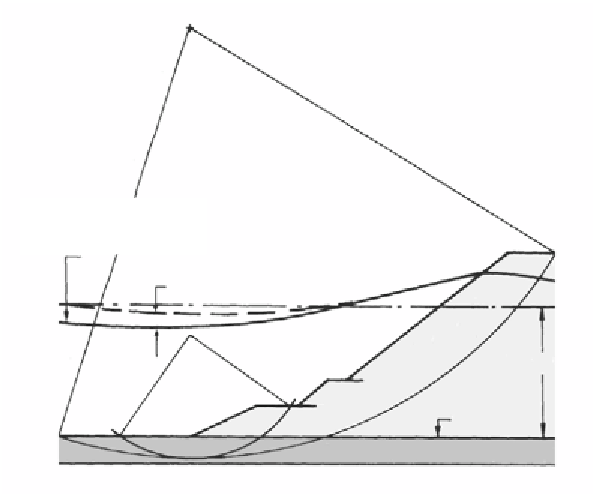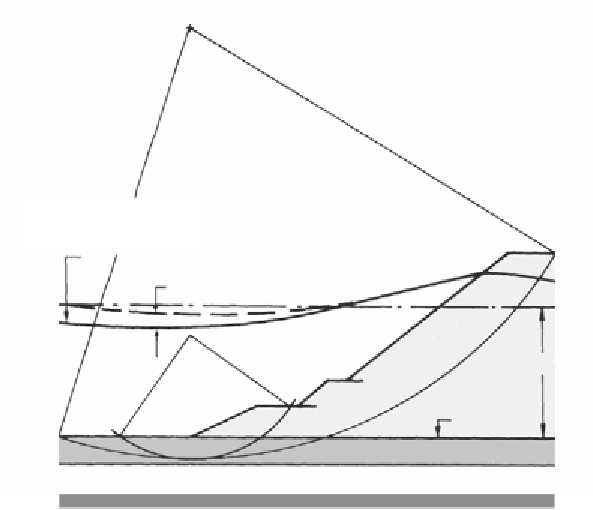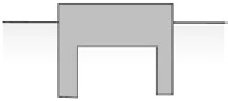Geoscience Reference
In-Depth Information
F
1
F
1
F
1
suction block
suction block
critical moment of
the design wave
critical moment of
the design wave
critical moment of
the design wave
excess pore pressure in the sand
excess pore pressure in the sand
excess pore pressure in the sand
F
2
F
2
F
2
20 m
20 m
20 m
seafloor
seafloor
seafloor
loose sand
loose sand
loose sand
Figure 16.20 Local and total stability under storm wave attack
Obviously, the local toe may fail, causing the armour layer above to shift down
and expose the core behind to wave attack and erosion. This failure mechanism can
be prevented by extending the toe structure (adding rock) or by applying special
structure elements, such as a geotextile with rock on top or a suction block mattress
(Zen). If just rock is placed before the toe, it is assumed that during storms they get
submerged in the sand and form a stable metaskeleton.
E
SQUEEZING
If an embedded soil layer is liquefied it may be squeezed by the overburden
load. The analysis of squeezing of soft layers is rather complicated, but a simple
approximation method is sufficient in many cases. This method evaluates the
horizontal equilibrium of a soil column (Fig 16.21). The active earth pressure
produces a force
E
a
. The resisting force is
E
p
and an intermediate shear force
E
s
.
The safety against sliding is expressed by the ratio
F
= (
E
p
+
E
s
)/
E
a
, which can be
determined by evaluating the following formulas
H
H
L
E
K
(
)
2
c
K
dz
,
E
K
2
c
K
dz
,
E
0
dx
(16.33)
a
a
v
a
p
p
v
p
s
0
0
Here,
K
a
is the coefficient of active earth pressure (see Chapter 7),
K
p
the
coefficient of passive earth pressure,
v
the original vertical effective stress,
the
load increment,
c
the cohesion and
the shear stress.









Search WWH ::

Custom Search